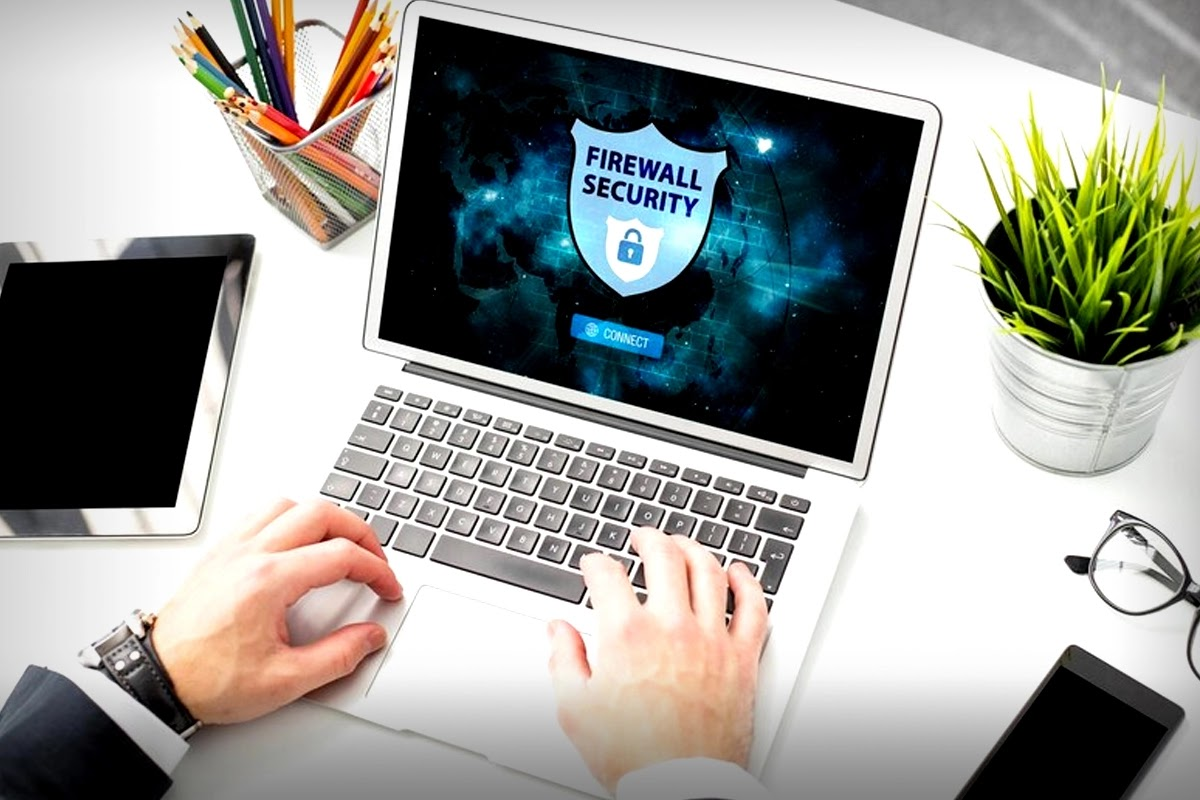Cybersecurity Threats in VoIP: How to Safeguard Your Business
KEY TAKEAWAYS
VoIP (Voice over Internet Protocol) is a cloud-based phone system that allows users to make and receive phone calls over the Internet without using phone cables and wires. In this digital world, the popularity of VoIP phone systems is increasing daily. VoIP provides several benefits to businesses of all sizes, including cost-saving, multi-tasking support, higher scalability, remote-friendly, etc.
Thus, many small to large-scale organizations are leveraging VoIP, replacing traditional phone systems. Although VoIP is popular and offers a variety of benefits, it also poses many security risks that one cannot ignore.
In this blog, we will discuss the common cybersecurity threats and vulnerabilities in VoIP systems. Additionally, we will look at how to protect your critical business information and data from those risks.
Common Cybersecurity Threats in VoIP

Some common cybersecurity threats in VoIP include:
A. Denial of Service (DoS) Attacks
Denial of Service (DoS) attack is a common cybersecurity threat in VoIP. DoS attack occurs when attackers or unauthorized users prevent legitimate users/ VoIP users from accessing computers, networks, or other IT resources.
In this cyberattack, attackers flood web servers and computer networks with numerous fake traffic. It makes web servers and networks slow down and eventually stop working. Similarly, they become unable to handle real users.
Signs that show that your VoIP system is under a DoS attack:
- A single IP address generates a massive amount of traffic.
- Traffic increases suddenly.
- Unable to send or receive phone calls and messages.
Tips to prevent Denial of Service (DoS) attacks
You can prevent DoS attacks using a VPN (Virtual Private Network) and encryption and decryption methods. You can use a VPN to enhance VoIP security and prevent DoS attacks. You can ask your VoIP service provider to separate VoIP and general systems connections.
Likewise, in VoIP, encryption and decryption are secret codes that are used to exchange calls and messages over the internet. In this method, the secret codes are exchanged on both ends of the VoIP devices before initiating a call.
It means one person must have an encrypted key to turn the voice into secret code, and the other person receiving a call must have a decrypt key to turn the code into understandable words. This process ensures that only the parties having a encrypt and decrypt key can access the communication, preventing unauthorized access.
B. Malware and Phishing Attacks
Malware and cybersecurity are other common cybersecurity threats in VoIP. Malware, aka malicious software, refers to harmful software programs attackers use to access entire systems, disrupt business, eavesdrop on conversations, and steal confidential data.
Some common VoIP malware include viruses, worms, and Trojans. Similarly, an attacker can send malicious software through various channels in VoIP systems. These channels include email attachments, links, download links, etc.
Similarly, phishing attacks in VoIP refer to cybersecurity threats where attackers present themselves as legitimate organizations and trick users into revealing private information. Usually, in this threat, attackers send false messages and emails about suspicious activity occurring on users’ accounts and request them to click on the links or share login credentials to trick users.
Tips to prevent malware and phishing attacks
Verifying the sender’s email address before replying to them is essential to prevent malware and phishing attacks. Also, you should never click on an unfamiliar click and share private information via texts or emails. Apart from these security measures, you can install a Firewall that blocks malware and prevents unnecessary access.
C. Eavesdropping and Wiretapping
Eavesdropping and wiretapping are the security threats used to listen, record, and monitor ongoing phone calls without the participants’ consent. Eavesdropping involves using a software program to record or listen to VoIP calls. In contrast, wiretapping involves connecting the listening device to the VoIP device to monitor the calls secretly.
Eavesdropping and wiretapping impose high-security threats on the VoIP phone system and overall business operations. Attackers can use this method to steal sensitive business information and affect an organization’s reputation.
Tips to prevent Eavesdropping and wiretapping
The security measures that can be taken to prevent eavesdropping and wiretapping include updating the VoIP system frequently and using Virtual Private Network (VPN or Secure Real-Time Transport Protocol (SRTP) while making a call.
D. Call Tempering
Call tempering is a cybersecurity threat in which an attacker tries to disrupt the ongoing calls. Hackers’ tempers call through various methods. A few of these methods include injecting noise packets into the VoIP system’s network, sending vast amounts of data, and delaying the transmission of data and information.
Call tempering directly affects the call’s quality and makes it difficult to have clear and seamless communication.
Tips to prevent call tempering
Using Secure Real-time Transport Protocol (SRTP) and Transport Layer Security (TLS) is one way to prevent call tempering. SRTP and TLS help to verify the identity of the caller. Another way to prevent call tempering is to implement monitoring systems. It helps detect suspicious activity or unusual call patterns.
Vulnerabilities in VoIP Systems
There are many vulnerabilities in VoIP system that affects VoIP security. Some common vulnerabilities in the VoIP system include:
A. Insecure Network Configuration
Insecure network configuration occurs due to weak firewall rules, an open port, and a poorly segmented VLAN.
Risks: Some risks associated with insecure network configuration include eavesdropping, call tempering, DoS attacks, disruptions in the service, and unauthorized access.
Prevention: The preventive measures to prevent this vulnerability include implementing strong firewall rules and encryption methods, updating the VoIP system, and segmenting VLAN.
B. Software and Firmware Vulnerabilities
VoIP phone system relies heavily on the software and firmware to function correctly. However, if the software and firmware are not properly configured, it will impose vulnerabilities in the VoIP system. Usually, software and firmware vulnerabilities occur when the software and firmware are not up-to-date and restored timely.
Risks: Software and firmware vulnerabilities invite several risks, like malware and viruses, security breaches, and unauthorized access.
Prevention: It is crucial to update the software and firmware and conduct vulnerability assessments periodically to prevent software and firmware vulnerabilities.
C. Weak Authentication
Weak authentication is another vulnerability in the VoIP system. Weak passwords and other login credentials, poor session management, and lack of two-factor authentication result in weak authentication.
Risks: Some risks associated with weak authentication include authorized access to VoIP accounts and identity impersonation.
Prevention: Using strong and hard-to-guess passwords and login credentials is vital to prevent weak authentication. Using a fingerprint scan (multi-factor authentication) is another crucial security measure.
D. Insider Threats
Insider threats come from within the organization. Insiders can threaten a VoIP system by misusing their access for malicious activities, sniffing VoIP traffic, and installing malware on VoIP devices.
Risks: Insider threats welcome several risks, such as data leaks, breaches, and damage to an organization’s reputation.
Prevention: Monitoring user activity regularly, implementing strict rules and policies, and training staff are crucial to mitigate insider threats.
Safeguarding Your Business

Consider the following security measures to safeguard your business against cybersecurity threats and enhance VoIP security.
A. VoIP Security Best Practices
You should implement these VoIP security best practices to enhance VoIP security:
1. Encryption of VoIP traffic: You should encrypt your VoIP traffic using VPN and SRTP.
2. Strong password policies: You should create strong passwords for your VoIP accounts. The password should contain at least 12 characters, uppercase letters, lowercase letters, symbols, and numbers.
3. Regular system updates and patch management: Regularly update your VoIP system, devices, and software to keep the system up-to-date. The updated VoIP system has the latest security patches.
4. Monitoring and intrusion detection: You should utilize monitoring tools and intrusion detection systems. These tools help to identify suspicious activities and other security threats.
B. VoIP Security Solutions
Implement these VoIP security solutions to safeguard your business:
1. Firewalls and intrusion prevention systems: Install firewalls and intrusion prevention systems to block unauthorized access to your VoIP network.
2. Session Border Controllers (SBCs): With SBCs, each call routes to the correct destination. Additionally, SBCs filter calls, manage bandwidth and protect against malware.
3. VoIP-specific security software: Utilize various VoIP-specific security to protect VoIP systems from eavesdropping, DoS attacks, etc.
C. Employee Training and Awareness
You should also train your employees and make them aware of the following:
1. Importance of security education: Businesses should conduct classes and programs to make employees aware of the importance of VoIP security. Also, train them on best practices for safe VoIP usage.
2. Recognizing and reporting security threats: Businesses should conduct workshops to train employees on the tactics to recognize signs of security threats. Also, tell them to report them immediately once they see symptoms.
3. Social engineering awareness: Inform employees of attackers’ techniques and tactics to manipulate individuals into revealing sensitive information.
D. Incident Response and Recovery
Take into account the following incident response and recovery measures:
1. Developing an incident response plan: Create an incident response plan detailing the procedures to follow in a security breach.
2. Steps to take during a security breach: It is essential to follow specific steps during a security breach to safeguard your business. These steps include following the incident response plan, monitoring the situation, and notifying appropriate parties.
Conclusion
Cybersecurity threats have affected several areas in this modern world, and VoIP phone system is no exception.
The common cybersecurity threats in the VoIP phone system include Denial of Service (DoS) attacks, malware, phishing, eavesdropping, wiretapping, and call tempering. These cybersecurity threats arise from insecure network configurations, weak authentication, clicking on malicious links, or insider threats.
Similarly, we can implement several security measures to enhance VoIP security. These measures include installing firewalls and intrusion prevention systems, training employees, using strong passwords, frequently updating VoIP systems, etc.
Also, it is necessary to choose the best VoIP provider. Among the various VoIP providers, Dialaxy stands out as the best one. Dialaxy implements advanced security measures to protect your data and provide 24/7 monitoring support.





